What do we think of when we think about art galleries? Broad walls, glass storefronts, and brick-and-mortar spring to mind. Galleries are often associated with where they are and how they present their space, as well as the art that they show. Are they a white cube space? A converted townhouse? A dealer’s actual house?
In a post-pandemic art world, the notion of what it means to be a gallery has become somewhat more elastic. Many art businesses were forced to shift to online sales channels when COVID-19 restrictions forced businesses and people to work from home. And quite a few of the galleries that made or witnessed the shift decided not to return to a business model that relied on a permanent, physical location—hence, the rise in the art world of what has been termed “nomadic” galleries.
In short, a nomadic gallery operates without a fixed location. Whether they rely on temporary spaces or online platforms to showcase art, these galleries are nimble and adaptive to the art market around them, hosting shows and presenting artworks in changing circumstances and locations.

Installation view of “Saturn Gives Structure to the Dream” at 52 Walker in New York, 2024. Courtesy of Superposition.
Nomadic galleries are a growing presence. They are present at prominent art fairs and art world moments, popping up at international art hubs and local scenes. This rise makes sense, too, in a post-pandemic environment where soaring real estate prices around the world have made the concept of a stable, long-term gallery location much trickier for newcomers.
“We’re pushing the narrative to other gallerists that this is a model that they should be thinking about, too,” said Storm Ascher, who founded her nomadic project Superposition in Los Angeles in 2018 at age 25. “Sharing space is really important for art dealers in general, so we’re not thinking of this necessarily as a competition. We’re seeing this as just a way to uplift the artist.”
Here, we speak to five nomadic galleries about how they operate in the art world today and how they are continuing to thrive.
Why do galleries make the decision to go nomadic?
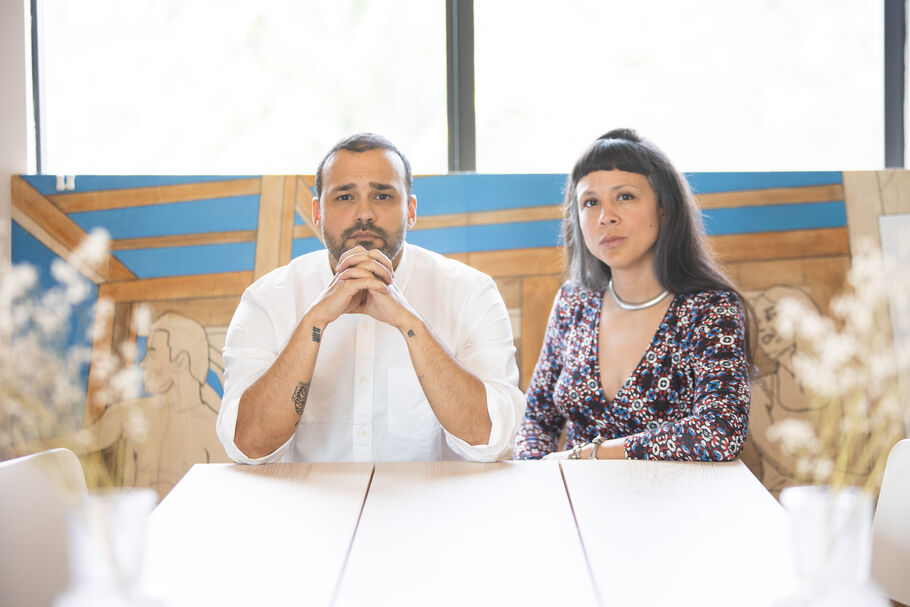
Portrait of Aurelio Aguiló and Mayra Mejia. Courtesy of homework.
As well as the economic flexibility that comes without having a permanent space, nomadic galleries exist for a variety of reasons, including ethical community considerations and the pursuit of innovative exhibition strategies.
For Ascher, entering the art world came with a question: “How do I participate in this without adding to the struggles of the people who actually live in these places?” This ethical consideration—centered around concerns of increased gentrification in city centers as rent prices inflate worldwide—is a driving force behind Superposition, and the nomadic gallery model in general, promoting engagement without displacement.
Elsewhere, in Miami, Mayra Mejia and Aurelio Aguiló built homework, founded in 2021 during Miami Art Week, on similar community-oriented ideas. “I wanted to do something that catered to them that was warm, inviting, and that’s why our exhibitions usually have intensive programming around it,” Aguiló said. The gallery hosts a variety of online and pop-up exhibitions.
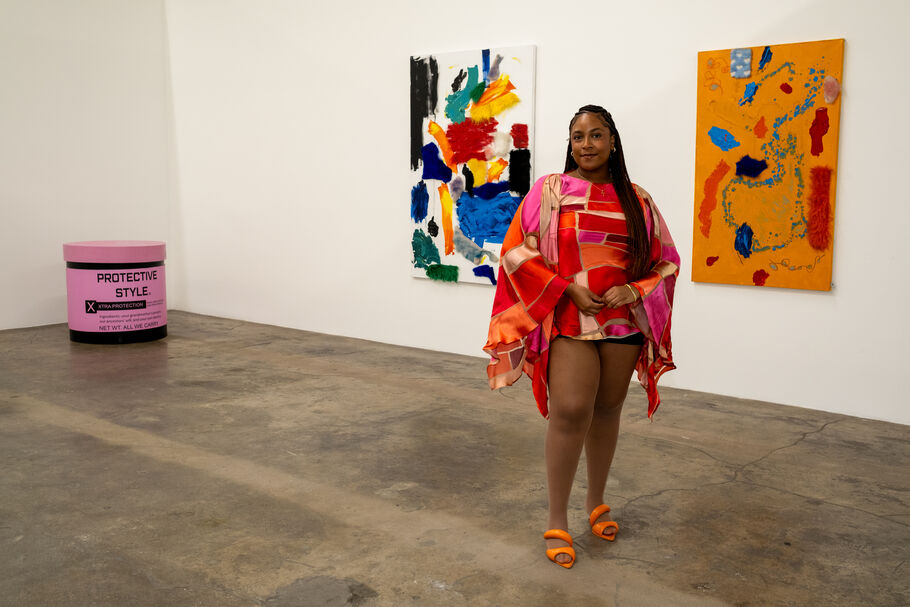
During the in-person shows, Aguiló and Mejia intend to bring in the community with activations such as artist performances or film screenings. “We’re in spaces for a short period of time, and in that short period of time, we try to pack in as many activations as possible to bring in the community to be able to interact with the art,” he added.
For young gallerists like 28-year-old Cierra Britton, who founded her eponymous gallery in 2021, the nomadic model offers a way to pursue their visions amid economic uncertainties. Without the capital to land a permanent space, Britton decided to set up a temporary three-month lease in New York’s SoHo at the age of 26, where she could begin to accomplish her vision of platforming women artists of color, such as Jewel Ham or Kennedi Carter.
“Starting out, I knew that the model was always going to be short-term leases so that I could do very intentional shows and have a very intentional program while also being as sustainable as possible because I was super young,” Britton said. “My program is a mission-based one, and I didn’t want to continue to watch women of color, femmes of color, be the minority of what’s shown and appreciated in our market.”
Why are nomadic gallery models on the rise?


Economic pressures, the desire for geographical flexibility, and the need to reach new audiences are driving this nomadic and online push.
The widespread embrace of digital technology gave gallerists worldwide the chance to tap into new collector bases. For Denise Allen of Experience Jamaique—an online platform dedicated to bringing Jamaican and Caribbean culture to Europe—this meant bridging the gap in the Swiss and broader European art market by introducing Caribbean art, including Jamaican artists Nadine Anderson-Cheng and Stafford Schliefer, which has historically been underrepresented.
“I thought the safe way to start is to establish an online gallery—because the costs of running an online gallery are not as [expensive] as having a brick-and-mortar gallery,” said Allen. “[The online model] allows the artist to gain [viewership] beyond just the geographic confines where they live in terms of reaching collectors, reaching art lovers, and to have a broader view of the world of art and the interest in their art.”
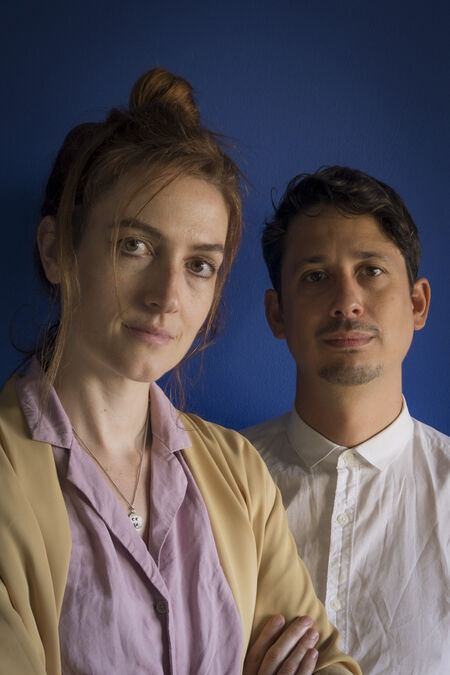
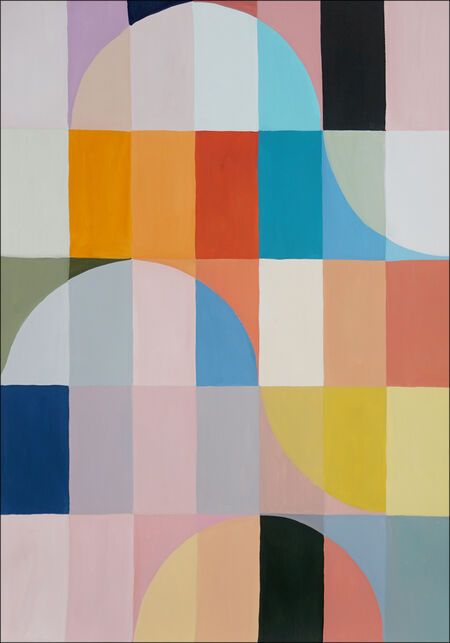
Being online-first is also allowing these galleries to build a presence that helps to inform where they show up physically. The team behind Barcelona-based Paradiso Images, comprising artists Ryan Rivadeneyra and Natalia Roman, established their gallery online in 2016 by selling their own art online. “We didn’t have to depend on traditional galleries,” Rivadeneyra said. “We wanted to just figure out a way where we could kind of take agency over our way of interacting with the art market, and we found that opportunity online and with pop-ups and events,” he added, emphasizing that all in all, this model is best suited for fostering new closer relationships with the artists and the intended collector.
“In our experience as artists, to have a show in a gallery does not mean to sell your art,” Roman said. “So we were most focused on selling our art, and we wanted to to get at the right spot. We were sure that the online market would be the place, so we started building this gallery step by step.
A new presence in the art world

As galleries increasingly embrace online or temporary models, they are opening themselves up to different corners of the art market. Art fairs are among the main ways that this shift has been observed. Initially, participation in major art fairs was a far-fetched idea for nomadic galleries like Superposition, given their lack of a permanent address.
“Art fairs were the biggest challenge because that was really a way for me to do more focused solo presentations since we don’t have a permanent space…[but] art fairs in the past didn’t accept gallery applications that didn’t have a permanent address,” Ascher recalled. However, the landscape has shifted, and now Ascher notes, “They’ll finally [say], ‘Your program does have a track record. We’ll make an exception.’ Even two years ago, during COVID, that would have been thought to have been unimaginable.”
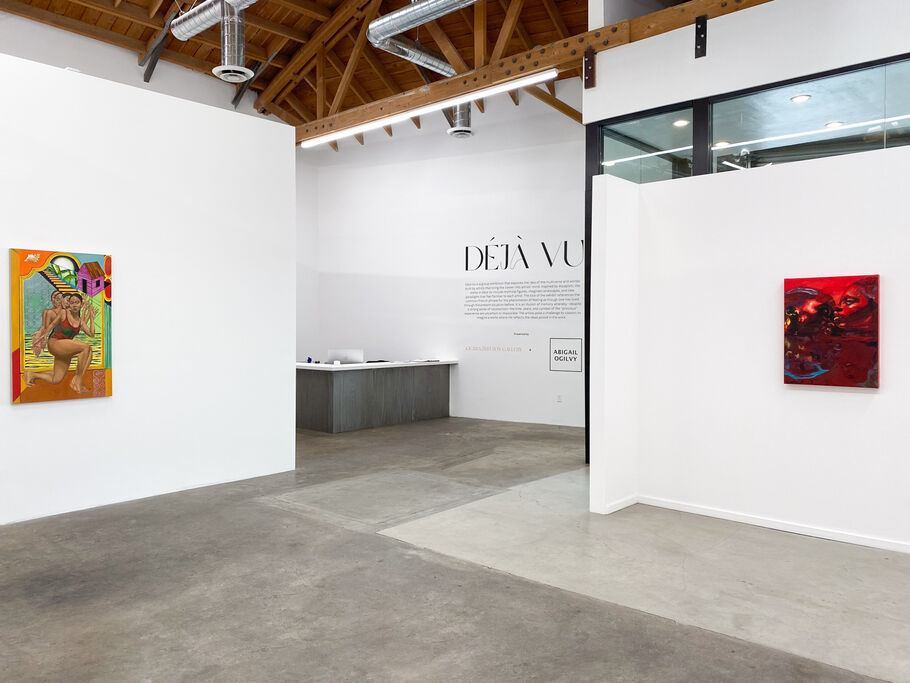
Being a nomadic gallery doesn’t mean a lack of physical presence. And around art fair moments, nomadic galleries can be seen hosting events and pop-ups that draw an engaged, trendy crowd. On a local level, gallery partnerships or collaborations are likely to increase as brick-and-mortars host their peers in joint exhibitions. For instance, Britton highlighted the success of a joint exhibition she hosted with Los Angeles–based Abigail Ogilvy Gallery, where they presented the group show “Déjà Vu” concurrently with Frieze Los Angeles.
Now, four years since the onset of the pandemic, the alternative model is becoming an established part of the art world. From the response that the gallerists involved describe, it doesn’t seem to be going anywhere, anytime soon.
“Every time we do it differently—we’re learning new skills and learning how to cooperate with different types of people in these different places,” said Ascher. “That’s what has held it strong because…once they actually see what we’ve done for the community with our receptions, there’s always a huge gathering and party and celebration.”
